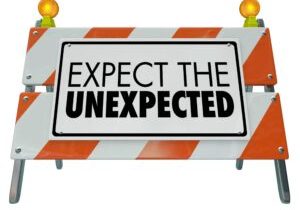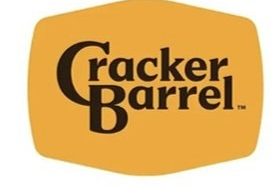
It’s that time of year. Weather permitting, of course, we want to be outside. Perhaps part of that motivation is still attributable to those awful days when we were cooped up at home during COVID.
I’m a believer the fumes of the pandemic explain why so many of us have that “travel bug”—the urge to go somewhere. That said, there’s nothing like getting out while still hanging around at home, and smart, strategic radio stations continue to take advantage of the opportunity.
The pros of live event marketing are nicely summed up by a new insight piece from Audacy as well as in a helpful research study from Eventbrite. The latter data strongly support local events not only as profit-making ventures, but also as hometown community-building activities.
The Audacy report from sponsorship strategists Morganne Denton and Melissa Panza makes the point that in an ultra-digital environment filled with screens everywhere, “nothing beats being there.”
That’s especially the case with concerts, as every record label promotion person knows so well—a live performance is an immersive experience that brings music and the artists who make it to life.
We saw this in last year’s Techsurvey where “being there” for a concert beats watching it at home by more than a 70:30 margin:
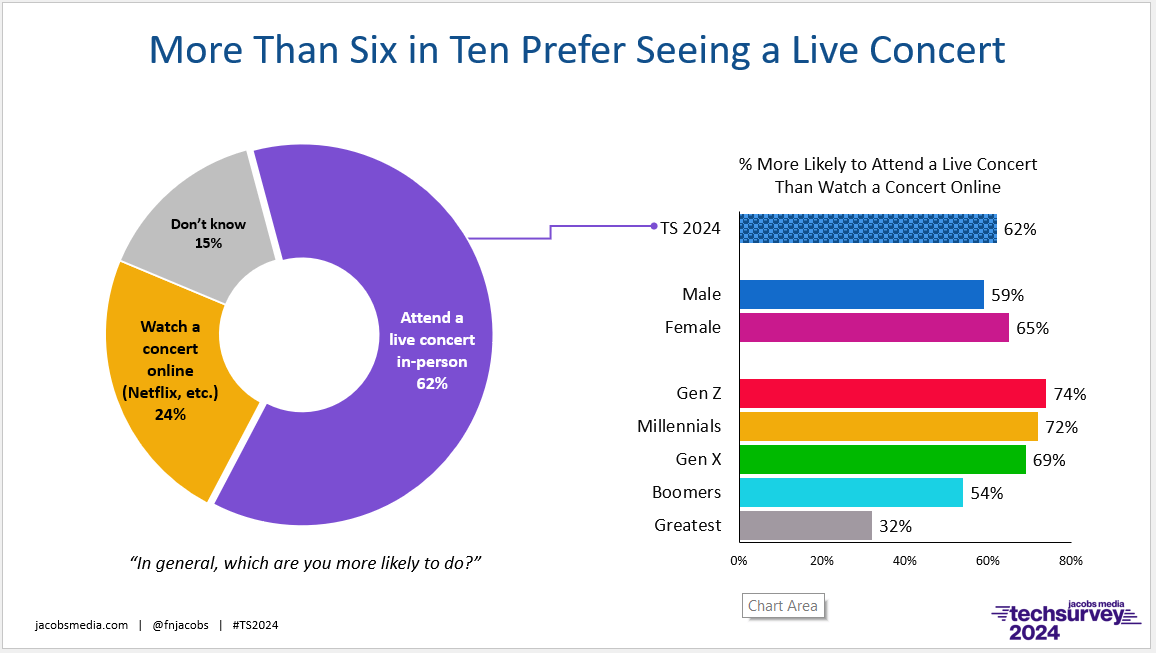
The Audacy piece goes on to make these key points about live—and local—events among attendees:
They notice – Four in ten attendees say they discovered a new brand while at a live event, a more immersive way to make an impression than being sandwiched in between 10 other advertisers in a never-ending commercial stopset.
They buy – The Audacy team points to “real conversion” at events as evidence by huge percentages of men, Gen Zs, and Millennials who say they made a brand purchase following a sponsor from a live event.
They feel it – My favorite result of live events, nearly six in ten (58%) attendees say they felt an “emotional connection” with a sponsoring brand. While services like Spotify and Netflix often are perceived as faceless, algorithmic utilities, there’s a lot to be said for creating a true bond with active consumers.
They share – The social piece is evidence fans take the experience with them, long after the event itself is over. When consumers create their own shareable content in their social spaces, the magic happens.

They skew premium – The Audacy analysts note how well educated live event audiences are—a majority have a bachelor’s degree—while their medium household income is well above the six figures threshold.
Additional benefits from the Techsurvey archives:
They go “gold” – About one in six concert attendees in our TS24 study tells us they ponied up the extra bucks for a VIP package. Event execs will tell you this is where the real margins are. Plus, these bigger spenders are more apt to check off the above boxes, as well as sharing their premium experience with others.
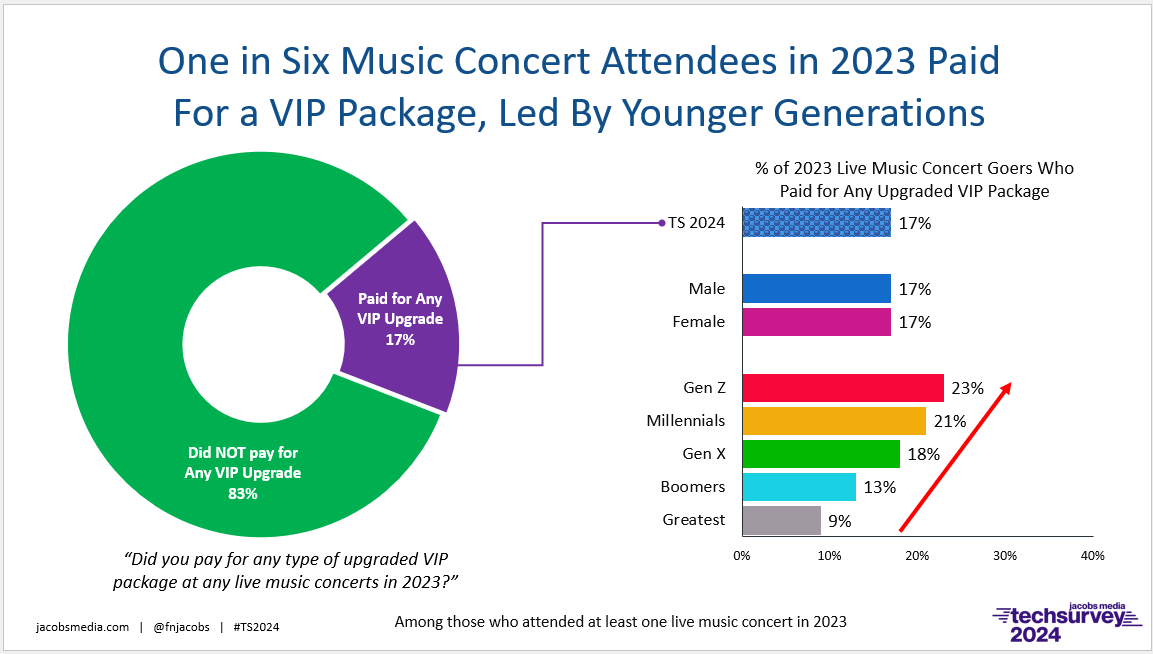
Eventbrite also notes that attendance at VIP events grew by 18% in 2023, similar to our data.
They buy merch – Another clear sign they want to amplify and remember those good times can be seen in the high percentage of live concert and event goers who aren’t the least bit bashful about spending exorbitant sums on merch and logo wear.
We saw this again in TS24 where “The Taylor Swift Effect” was in full bloom. Overall, three in ten of those who attended a live concert the previous year say they buy merch at most/every one of these shows. Do the math.
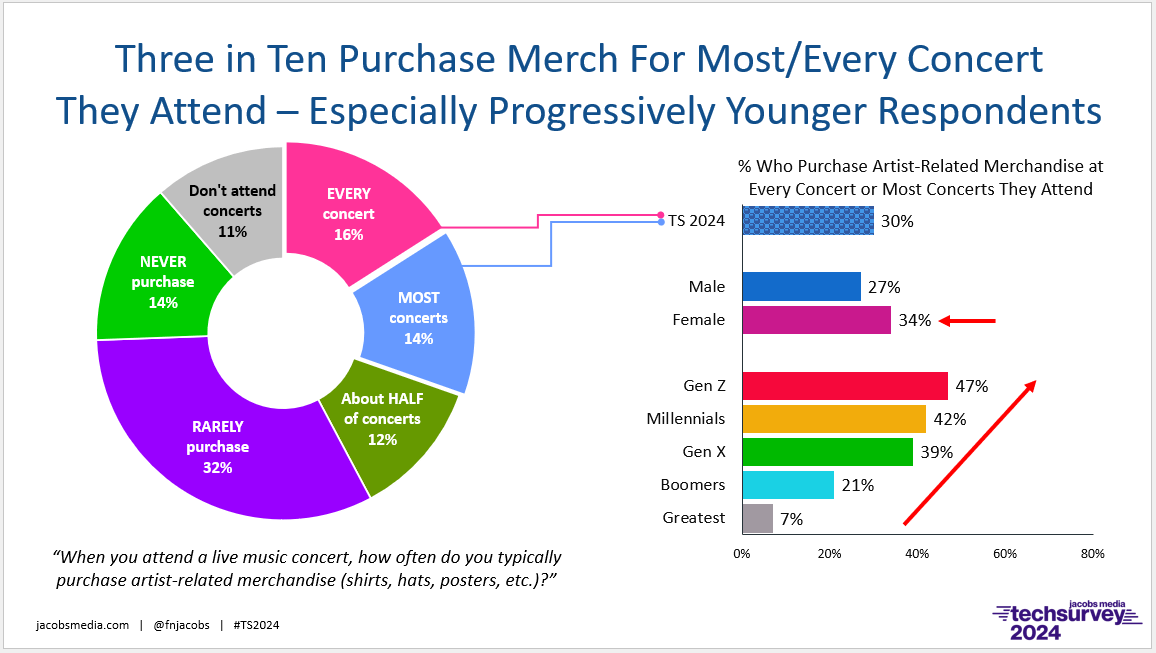
They will travel to take in a live concert – And willingness to make an event a true out-of-town experience is testament to how outsize these moments have become, not dissimilar to “destination weddings.”
In TS24, we asked about whether concertgoers had traveled more than 200 miles each way to enjoy the experience:
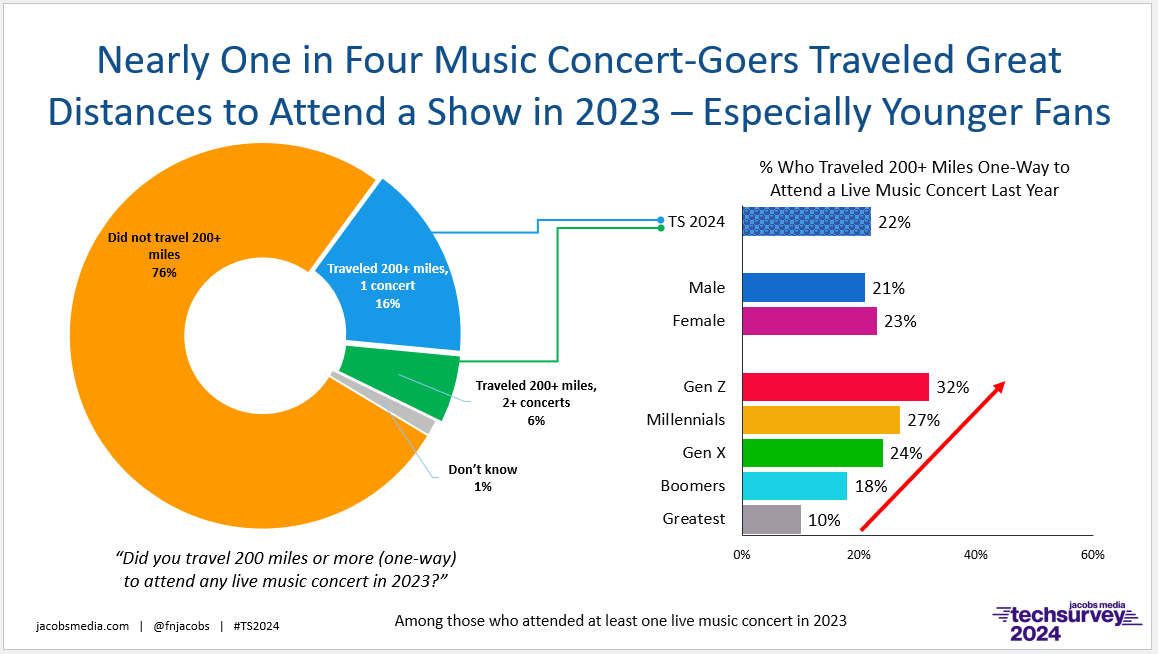
Impressively, nearly one in four have made a long-distance trek in order to experience a live show. And some have travelled 200+ miles two or more times in the previous year, another sign they’re engaged, motivated, and loyal.
All these positives aside, event marketing can be stressful and it can put staffs and organizations to the test. To build successful, sustainable programs, stations need experienced event coordinators or managers (not someone wearing multiple “hats”) as well as strong, reliable staffers.
Too many stations decimated their street teams during the last several purges, often leaving them ill-equipped to pull off even the simplest events.
When we look at the radio organizations that have done this right—Leighton in Minnesota and Galaxy in upstate New York come to mind—they have made considerable investments in events, from the standpoint of staffing, quality control, and training.
There’s revenue to be made here, and the good news is that it can exude a positive “live and local” vibe. But the “degree of difficulty” is always high, making event marketing a challenge.
Originally published by Jacobs Media






